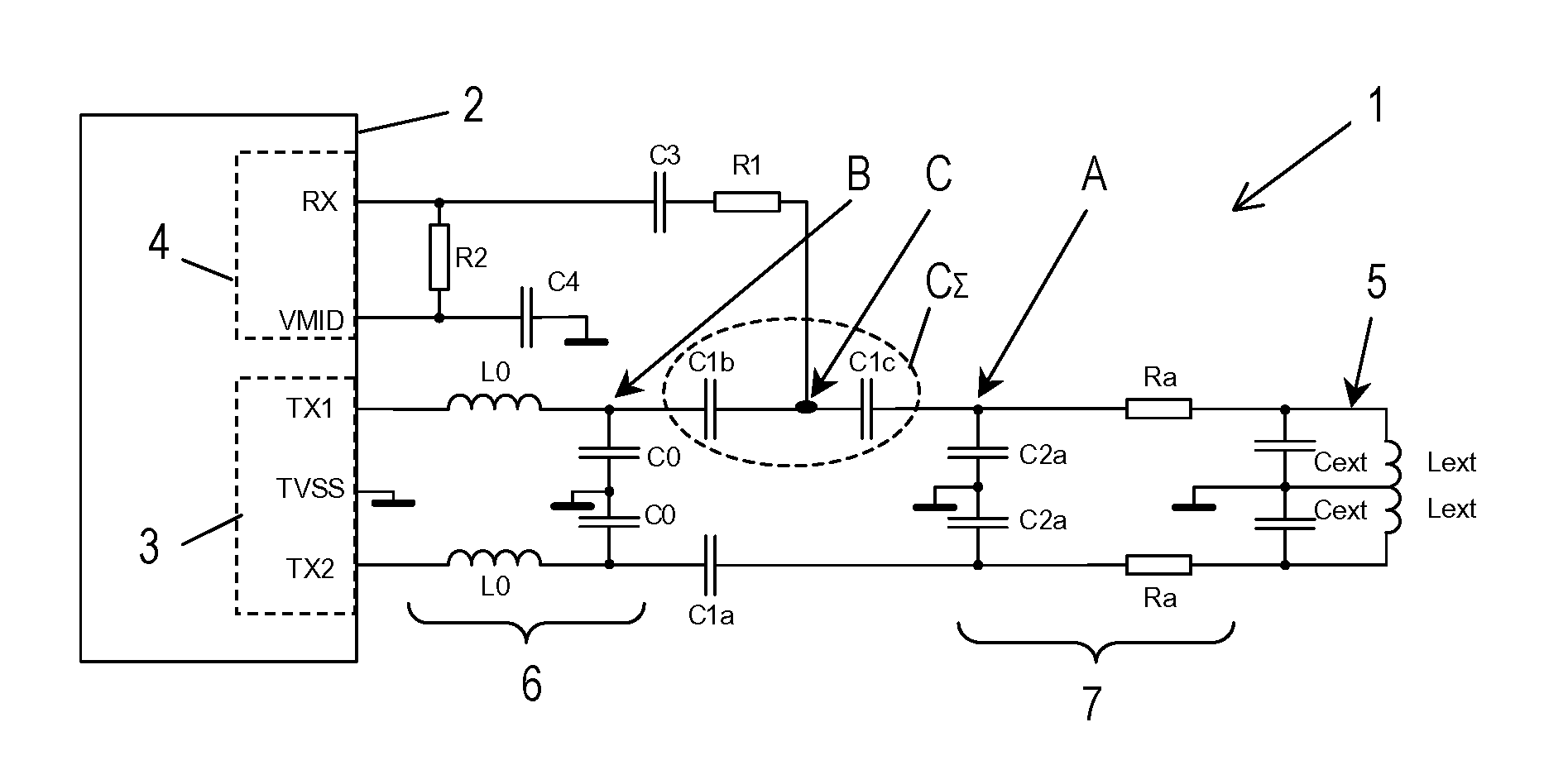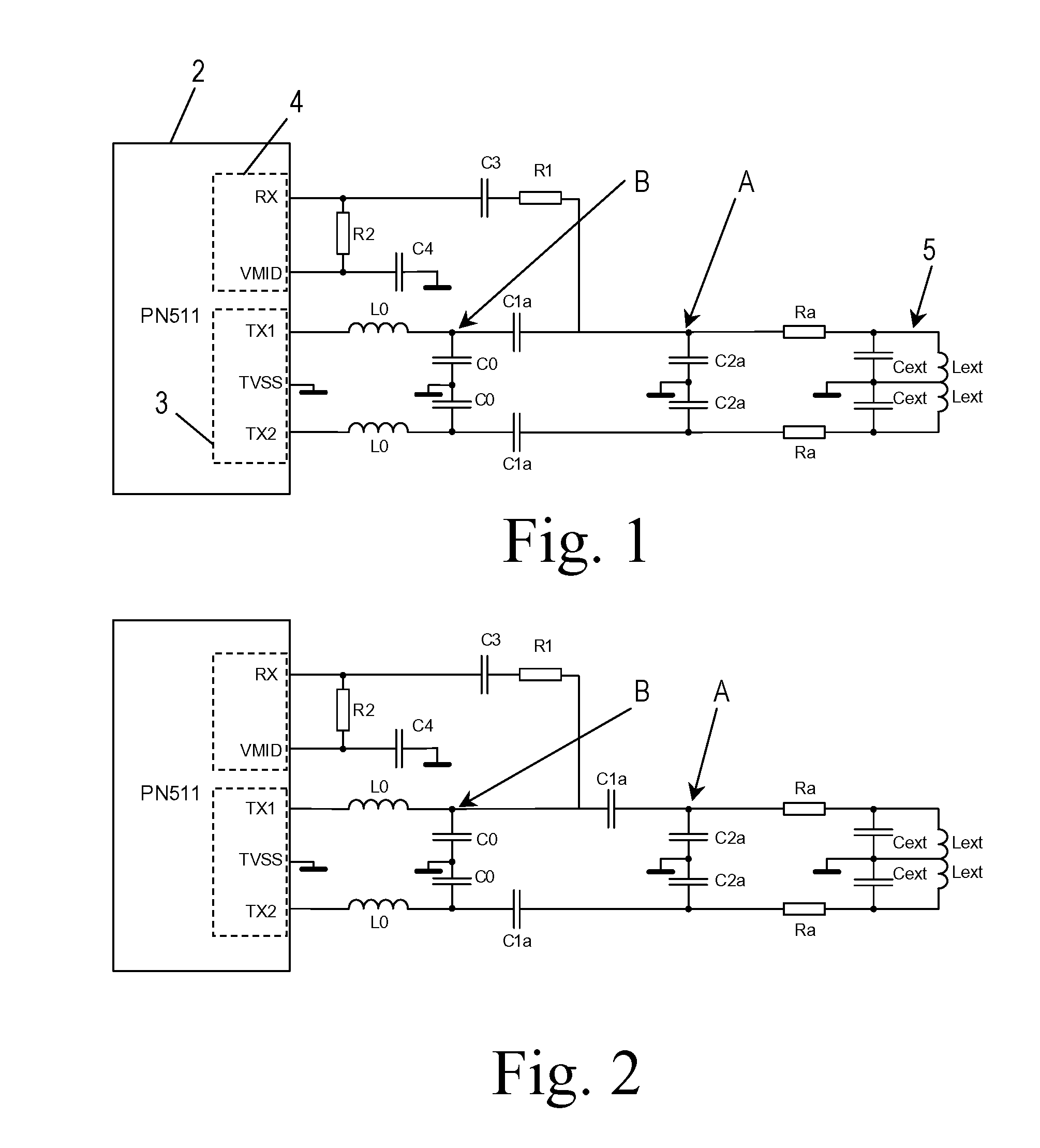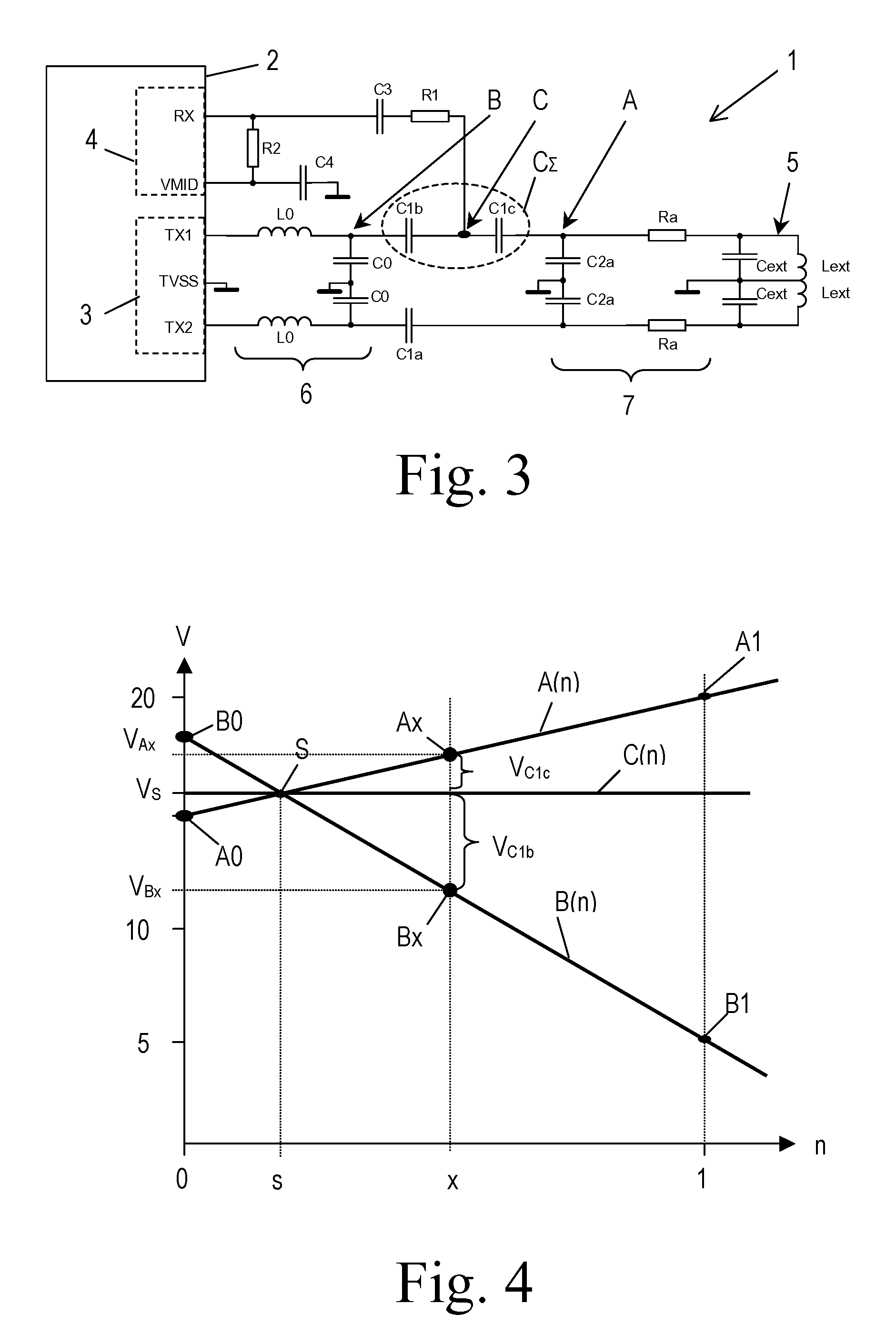Transceiving circuit for contactless communication
a technology of contactless communication and receiving circuit, which is applied in the direction of waveguide type devices, instruments, sensing record carriers, etc., can solve the problems of only achieving exact tuning, unstable voltage at the branching point of the receiving path rx from the first transmitting path tx, and detuning the antenna b>5/b>
- Summary
- Abstract
- Description
- Claims
- Application Information
AI Technical Summary
Benefits of technology
Problems solved by technology
Method used
Image
Examples
Embodiment Construction
[0031]FIG. 3 shows a circuit diagram of a transceiving circuit 1 according to the present invention. This transceiving circuit comprises an integrated RFID transmission module 2, e.g. a Reader IC or a near field communication transmission module. The transmission module 2 comprises transmitter means 3 and receiver means 4.
[0032]For a better understanding of the function of the RFID transmission module 2, a block diagram of the near field communication (NFC) transmission module type no. PN511 is shown in FIG. 7. The NFC transmission module 2 comprises analog circuitry which can be roughly divided into transmitter means 3 and receiver means 4. Although not shown, the analog circuitry comprises output drivers, an integrated demodulator, a bit decoder, a mode detector and an RF-level detector. A contactless UART communicates with the analog circuitry via a bus. The contactless UART comprises data processing means, CRC / Parity generation and checking means, frame generation and checking m...
PUM
 Login to View More
Login to View More Abstract
Description
Claims
Application Information
 Login to View More
Login to View More - R&D
- Intellectual Property
- Life Sciences
- Materials
- Tech Scout
- Unparalleled Data Quality
- Higher Quality Content
- 60% Fewer Hallucinations
Browse by: Latest US Patents, China's latest patents, Technical Efficacy Thesaurus, Application Domain, Technology Topic, Popular Technical Reports.
© 2025 PatSnap. All rights reserved.Legal|Privacy policy|Modern Slavery Act Transparency Statement|Sitemap|About US| Contact US: help@patsnap.com



